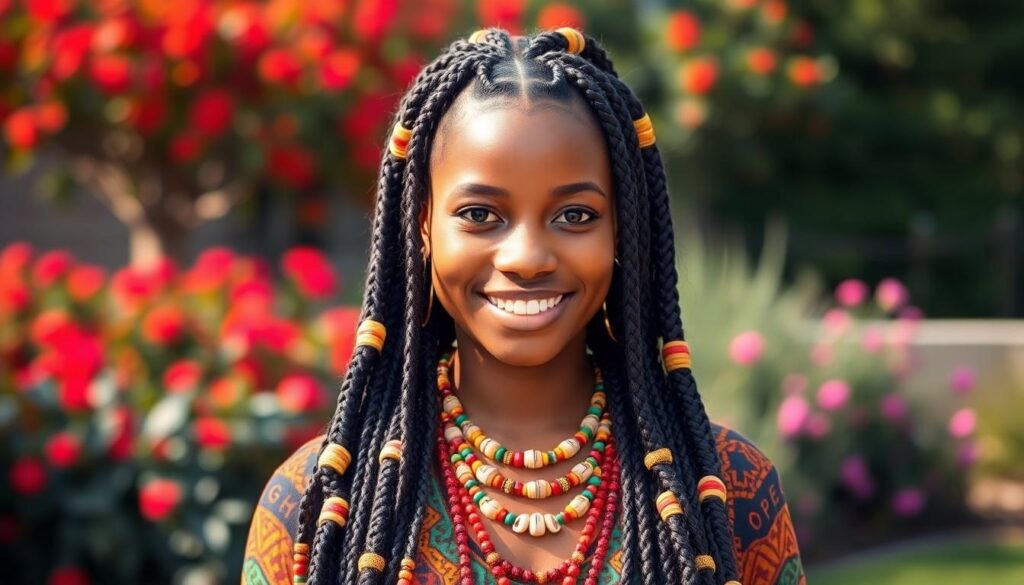Looking for a stunning protective hairstyle with deep cultural roots? Fulani braids offer both beauty and meaning, originating from the Fulani people of West Africa. These distinctive braids feature unique elements like thin to medium-sized plaits, decorative accessories, and an elegant pattern that frames the face perfectly.
We’ve gathered everything you need to know about this iconic hairstyle that’s captured global attention. From its rich cultural significance to modern styling variations, Fulani braids combine tradition with contemporary fashion in a way few other protective styles can match. They’re versatile enough for any season while keeping your natural hair protected and healthy.
The Rich Cultural History of Fulani Braids
Fulani braids originated among the Fulani people (also known as Fula or Peul), one of Africa’s largest nomadic groups spanning West and Central Africa. These indigenous pastoralists have created a hairstyle that’s far more than just a fashion statement—it represents centuries of cultural heritage and identity. Their braiding techniques have been passed down through generations, becoming an integral part of their cultural expression.
Throughout history, Fulani women have used their intricate braiding patterns as a form of non-verbal communication. Different braid styles traditionally indicated a woman’s marital status, age, wealth, and social position within the community. Young unmarried women often wore distinctive styles to signal their availability for marriage, while married women adopted more elaborate designs to showcase their status.
The symbolic nature of these braids extends beyond social signaling. Many Fulani braid patterns incorporate sacred geometry and designs that connect wearers to their ancestral traditions and spiritual beliefs. These patterns weren’t chosen arbitrarily but carried deep cultural significance that strengthened community bonds and preserved cultural knowledge.
Adornments play a crucial role in traditional Fulani braiding. Gold coins, cowrie shells, amber, silver coins, and beads weren’t simply decorative elements—they represented prosperity and status within the community. These accessories transformed braids into wearable art that celebrated both beauty and cultural heritage simultaneously.
Migration and cultural exchange have influenced how Fulani braids evolved across different regions of Africa. As Fulani people traveled across West Africa with their cattle, their distinctive braiding techniques spread and merged with local styles, creating regional variations while maintaining core characteristics. This cultural diffusion helped establish Fulani braids as one of Africa’s most recognizable and influential hairstyles.
Modern interpretations of Fulani braids have gained global popularity while maintaining connections to their cultural roots. Celebrities like Beyoncé, Rihanna, and Zendaya have showcased these styles on international platforms, bringing attention to their beauty while raising awareness about their cultural significance. This worldwide recognition has sparked important conversations about cultural appreciation versus appropriation.
Today’s Fulani braids represent a beautiful bridge between tradition and contemporary style. While modern adaptations may incorporate new elements like different hair colors or modified patterns, respectful wearers acknowledge and honor the rich cultural history from which these braids originated. This cultural awareness transforms hairstyling into an opportunity for cross-cultural appreciation and learning.
10 Stunning Fulani Braid Styles to Try in 2023
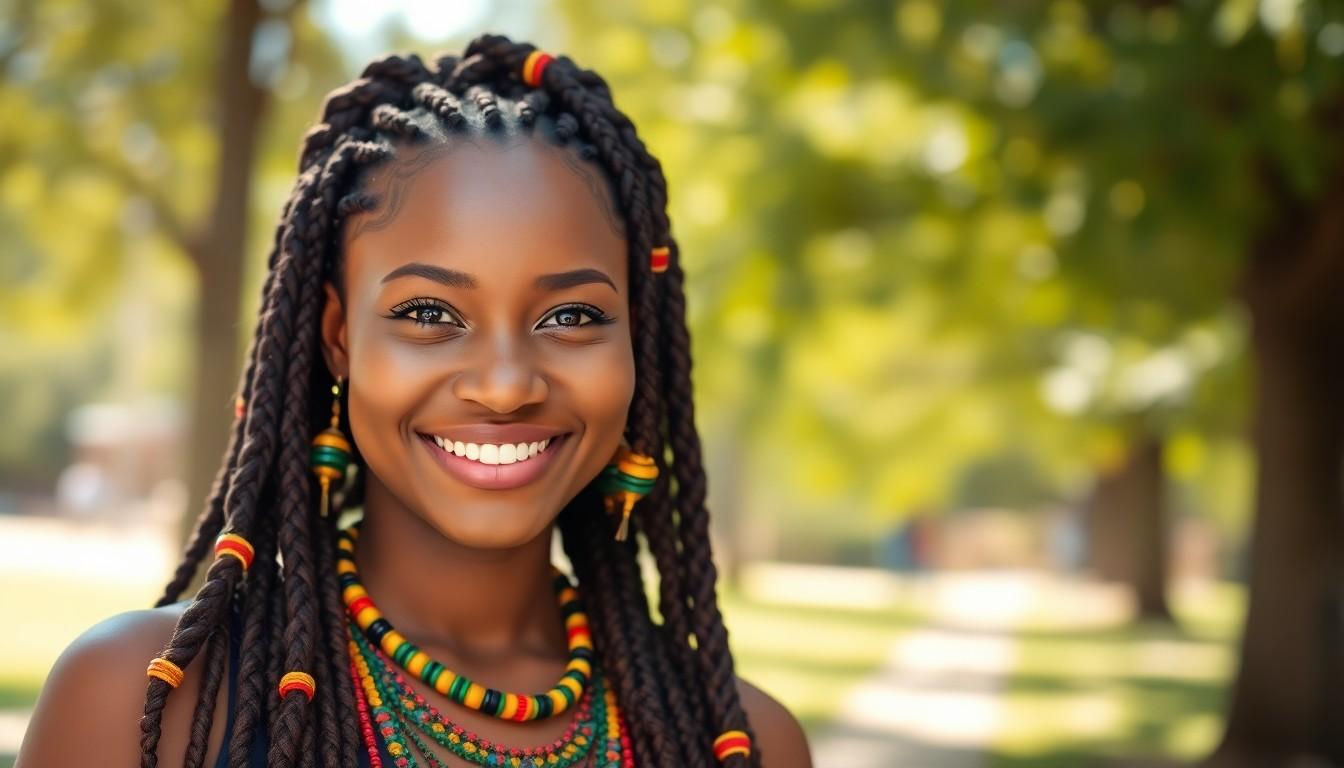
Classic Fulani Braids With Beads
Classic Fulani braids showcase the authentic roots of this traditional style with their distinctive pattern and elegant simplicity. These braids feature thin to medium-sized cornrows braided down the middle and to the sides of the head, creating a balanced and symmetrical look. Decorative beads adorn the ends of each braid, adding movement and a subtle musical quality when you move. This traditional adaptation from the Fulani people of West Africa preserves cultural elements while offering a timeless protective style that works for any occasion.
Fulani Braids With Cowrie Shells
Fulani braids with cowrie shells blend Ethiopian influences with traditional Fulani braiding techniques for a truly show-stopping look. Intricate zigzag parts create visual interest across the scalp, while slim braids flow gracefully into an elegant low bun at the nape. The addition of cowrie shells serves as both decoration and cultural significance, often paired with striking gold beads for contrast. This bold fashion statement offers excellent protection for natural hair while connecting wearers to rich African heritage through meaningful adornments.
Colorful Fulani Braid Variations
Vibrant beads transform traditional Fulani braids into eye-catching masterpieces that express personal style. Threading colorful miniature beads onto the ends of braids creates movement and visual interest that elevates the entire look. Bright hues can be selected to complement your wardrobe or showcase your personality, making each style uniquely yours. Boho Fulani variations incorporate looser, thicker braids with an undone quality, adorned with free-spirited accessories for a relaxed yet fashionable aesthetic that’s perfect for summer festivals or casual outings.
Fulani Braids With Hair Jewelry
Hair jewelry elevates Fulani braids beyond their traditional roots into true wearable art. Beyond basic beads, these styles incorporate metallic cuffs, delicate rings, and decorative clips that catch the light with every movement. Small rings woven throughout the braid pattern create unexpected points of interest, while strategic placement along the edges of the hairline frames the face beautifully. This contemporary take on Fulani braids allows for unlimited customization while maintaining the protective benefits of the foundational style.
Fulani Braids Updo Styles
Polished Fulani braid updos offer versatility for formal occasions while preserving the cultural significance of the style. “Straight Back Fulani Braids” feature tightly gathered cornrows secured in a linear design, finished with bold hair ties or decorative accessories at the back for a sleek, professional look. Another sophisticated option pulls the braids into an elegant low bun, as seen in Ethiopian-inspired variations, creating a regal silhouette suitable for special events. These updo styles demonstrate the remarkable adaptability of Fulani braids, transforming them from everyday protective styles to formal occasion-worthy creations.
How to Prepare Your Hair for Fulani Braids
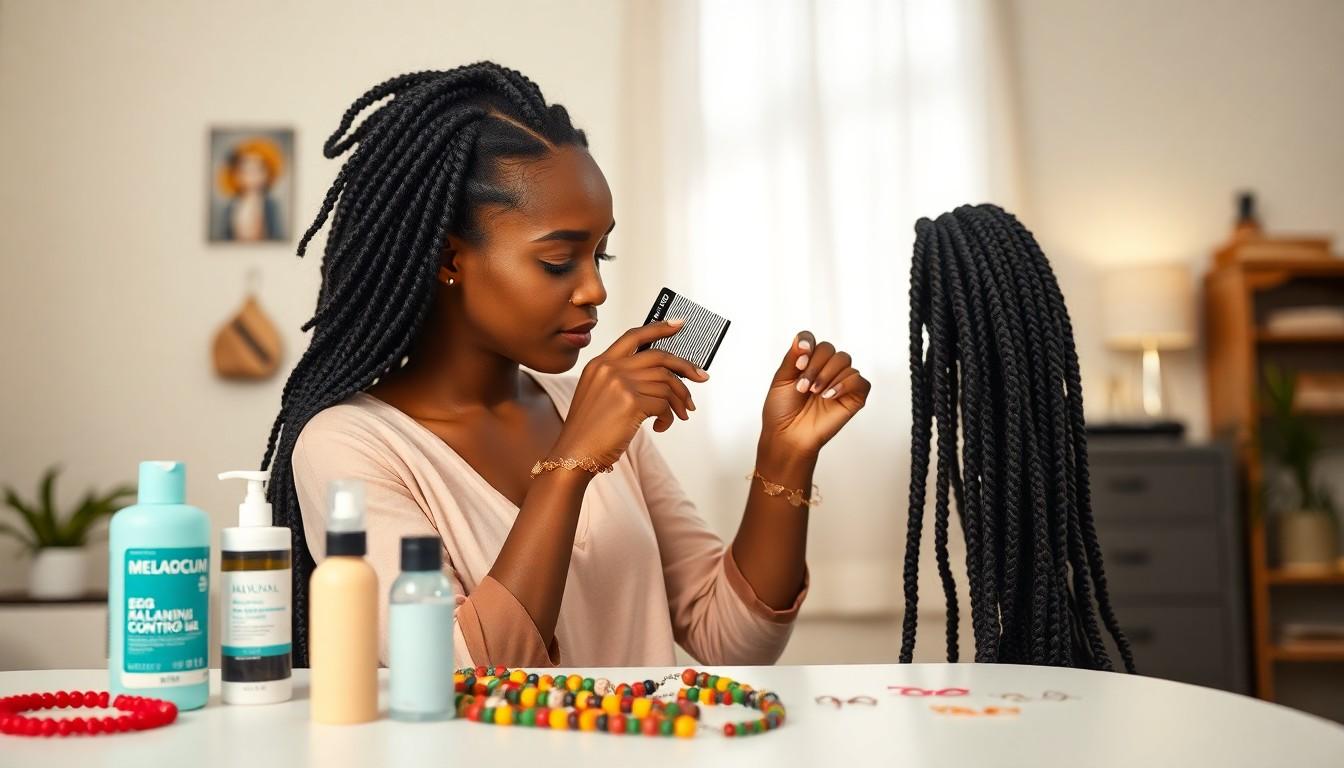
Preparing your hair properly before installing Fulani braids is essential for achieving beautiful results and protecting your natural hair. Let’s explore the necessary steps to get your hair ready for this stunning protective style.
Sectioning the Hair
Proper sectioning creates the foundation for well-executed Fulani braids. Start by creating a clean part that runs slightly above and behind your ears, using a rat-tail comb for precision. Divide each side into distinct sections based on your desired design pattern. These sections will accommodate different elements like straight braids and crisscross patterns that make Fulani braids so distinctive. Careful partitioning ensures your braids will have clean lines and a professional appearance.
Cleaning and Moisturizing
Before braiding begins, ensure your hair is thoroughly cleaned and deeply moisturized. Wash your hair with a clarifying shampoo to remove product buildup and follow with a hydrating conditioner. Apply a leave-in conditioner to keep strands supple and manageable throughout the braiding process. Well-moisturized hair reduces breakage risk and helps your braids last longer while keeping your natural hair healthy underneath.
Edge Control
Edge control plays a crucial role in achieving the polished look Fulani braids are known for. Apply a high-quality edge control product to create sharp, defined hairlines around your sections. Neat edges not only enhance the overall appearance but also maintain the crisp lines that showcase the intricate patterns of your Fulani braids.
Pre-Installation Hair Care Tips
Preparation begins days before your braiding appointment for optimal results. Deep condition your hair at least 48 hours before installation to ensure maximum moisture retention. Detangle your hair thoroughly using a wide-tooth comb to prevent painful snags during the braiding process. Trim any split ends to prevent further damage while your hair is in braids. Consider getting a protein treatment if your hair is damaged or overly porous to strengthen strands before the tension of braiding.
Essential Products for Fulani Braids
Gathering the right supplies ensures a smooth installation process. High-quality braiding hair comes first—choose synthetic, human, or curly human hair depending on your desired finish and texture. Purchase a strong edge control gel or pomade that matches your hair type to keep edges sleek throughout the style’s lifespan. Invest in sectioning tools like rat-tail combs and durable hair clips to hold parts in place during installation. Select decorative beads, cowrie shells, or metal cuffs that complement your personal style and the traditional aesthetic of Fulani braids. Stock up on leave-in conditioners, lightweight oils, and moisturizing sprays to maintain both your natural hair and braids after installation. These essential products will help you achieve authentic Fulani braids while prioritizing the health of your natural hair.
Step-by-Step Guide to Installing Fulani Braids
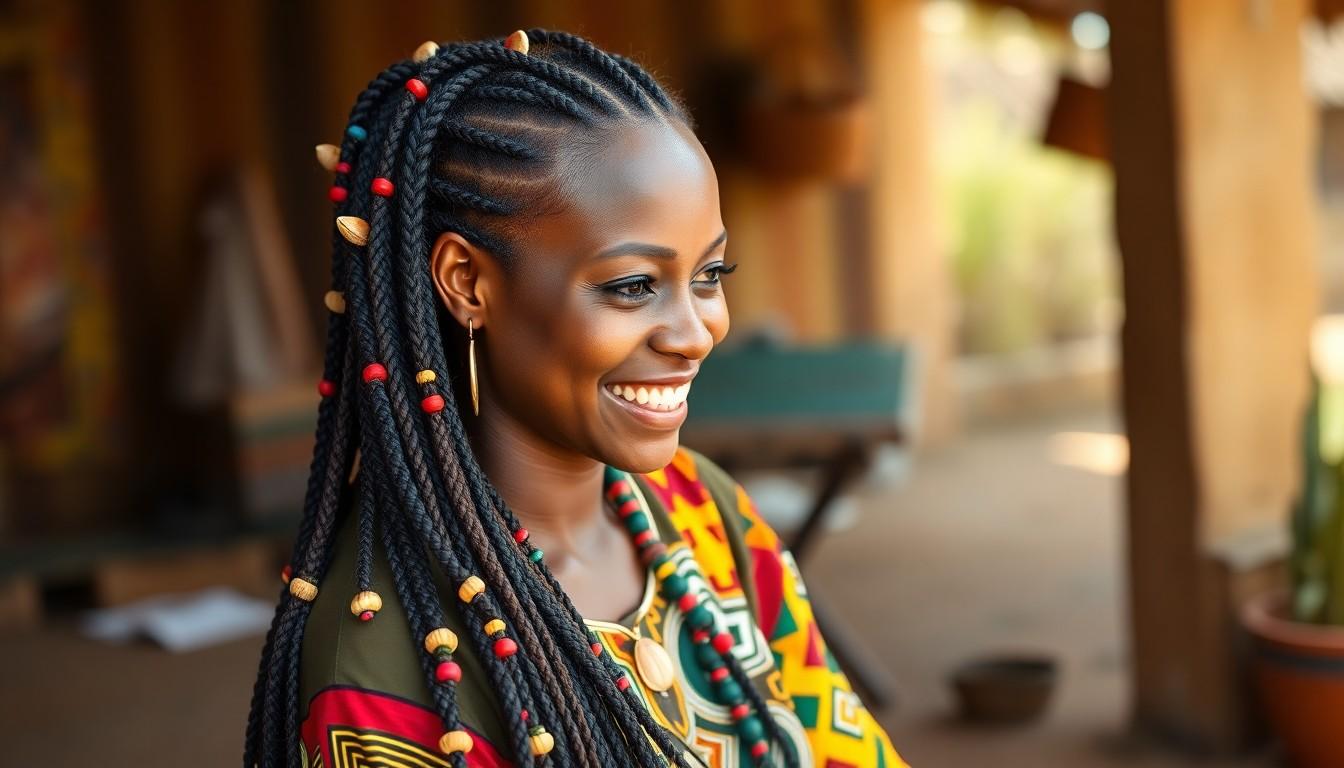
Creating beautiful Fulani braids requires attention to detail and proper technique. We’ve compiled comprehensive instructions for both traditional methods and modern adaptations to help you achieve this iconic West African hairstyle.
Traditional Technique
Traditional Fulani braids originate from the Fulani people of West Africa, particularly in Nigeria and surrounding countries. The authentic installation process begins with thorough preparation of the hair, including washing, conditioning, and completely drying before styling. You can enhance your braids by adding synthetic braiding hair for additional length or volume if desired.
For the basic braiding method, start by taking a small section of hair and dividing it into two distinct parts. Cross the right strand over the left, then incorporate a small piece of hair to the right strand before crossing it over again. This flat braiding technique continues with adding hair to the opposite side each time you cross the strands, creating the characteristic Fulani pattern.
Continue this braiding process until you reach your preferred length for the style. Traditionally, Fulani braids are braided halfway down and then transformed into a two-strand twist, with the ends naturally becoming puffy—a distinctive feature of authentic Fulani braids. The completed look often includes decorative elements such as beads or cowrie shells, which add cultural significance and visual appeal to the hairstyle.
Modern Adaptations
Modern Fulani braids have evolved while maintaining their traditional essence, offering versatility for contemporary style preferences. The braid back method represents a popular modern approach, involving braiding the hair in the back using techniques that are typically faster than traditional box braids. This variation often incorporates stylish Bantu knots at the crown and can be mixed with colored faux locs and curly extensions for added dimension.
Design variations have expanded significantly, including creative styles like the “Carnival Fulani” that incorporates diverse patterns and vibrant colors. These contemporary interpretations can be styled in multiple ways, allowing for personalization through different textures such as curly strands or faux locs integrated throughout the braids.
Today’s Fulani braids frequently incorporate trendy elements like Tetris-inspired geometric patterns or bohemian styles, making them more versatile and appealing to diverse fashion sensibilities. The modern approach emphasizes flexibility and creativity, encouraging personal expression through varied braiding techniques and accessories while still honoring the cultural significance of this traditional hairstyle.
Maintaining Your Fulani Braids for Longevity
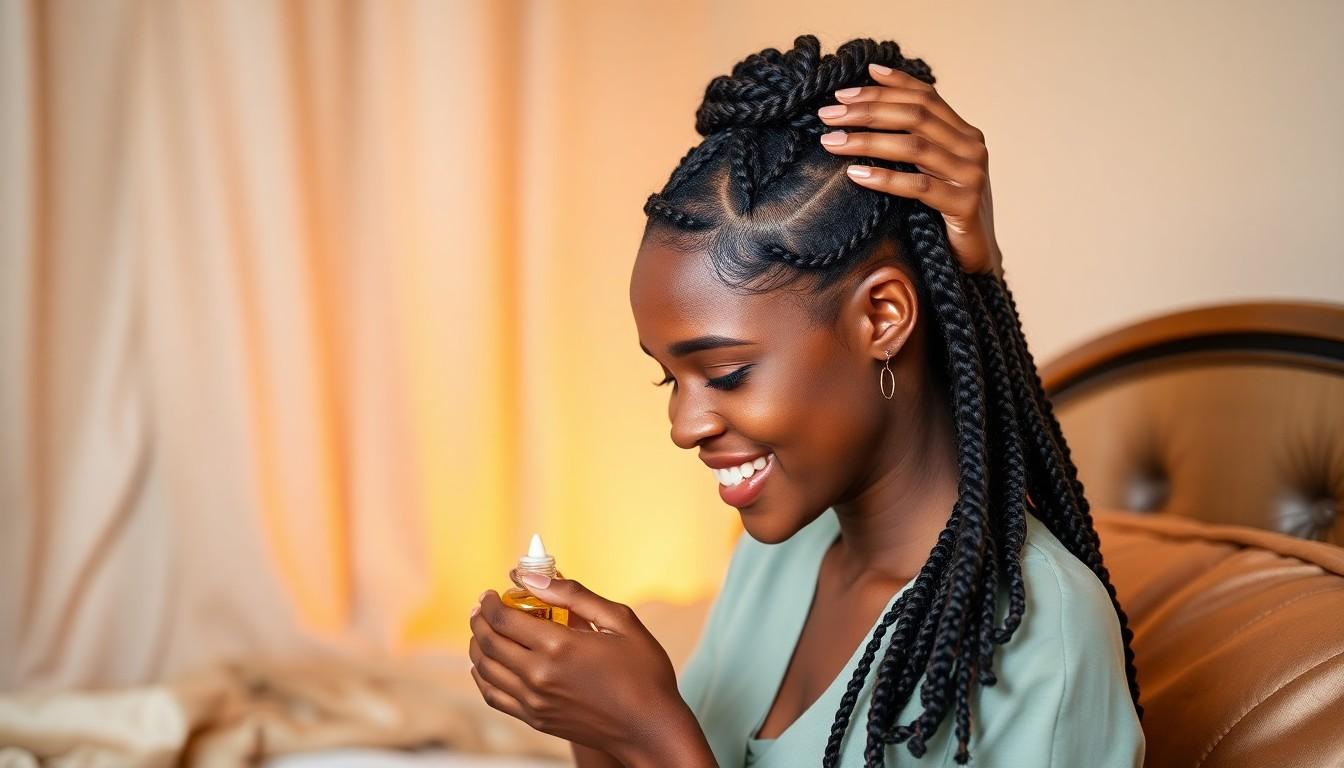
Proper maintenance is essential for extending the lifespan of your Fulani braids and keeping them looking fresh. With the right care routine, these beautiful protective styles can last up to 4-6 weeks while keeping your natural hair healthy underneath.
Daily Care Routine
Gentle cleansing forms the foundation of proper Fulani braid maintenance. Apply a diluted sulfate-free shampoo to your scalp and roots, carefully working between the braids without disrupting their pattern. Moisturizing should follow each cleanse, using lightweight leave-in conditioners or natural oils that won’t create product buildup while keeping your scalp and braids hydrated. Minimize manipulation throughout the day to prevent unnecessary frizz and friction that could compromise your style’s integrity. Every two weeks, perform a more thorough but gentle wash, or alternatively, try a root rinse that cleanses your scalp without fully soaking your braids. Scalp care deserves special attention—regular massages with light oils improve blood circulation and reduce itchiness that commonly occurs with protective styles. During physical activities that cause sweating, keep a moisture-locking spray handy to maintain hydration without weighing down your braids.
Nighttime Protection Methods
Protective fabrics play a crucial role in preserving your Fulani braids while you sleep. Wrap your hair with a satin or silk scarf every night before bed to minimize friction and prevent moisture loss that leads to frizz and breakage. Satin or silk pillowcases offer an additional layer of protection if your scarf comes loose during the night. Secure your braids in a loose ponytail or large braid before bedtime to reduce movement and tangling while you sleep. This simple nighttime routine significantly extends the neatness and definition of your braided style. Properly secured braids maintain their shape longer and help preserve the intricate patterns that make Fulani braids so distinctive. These protective measures work together to ensure you wake up with your braids looking as fresh as when they were first installed.
Common Mistakes to Avoid With Fulani Braids
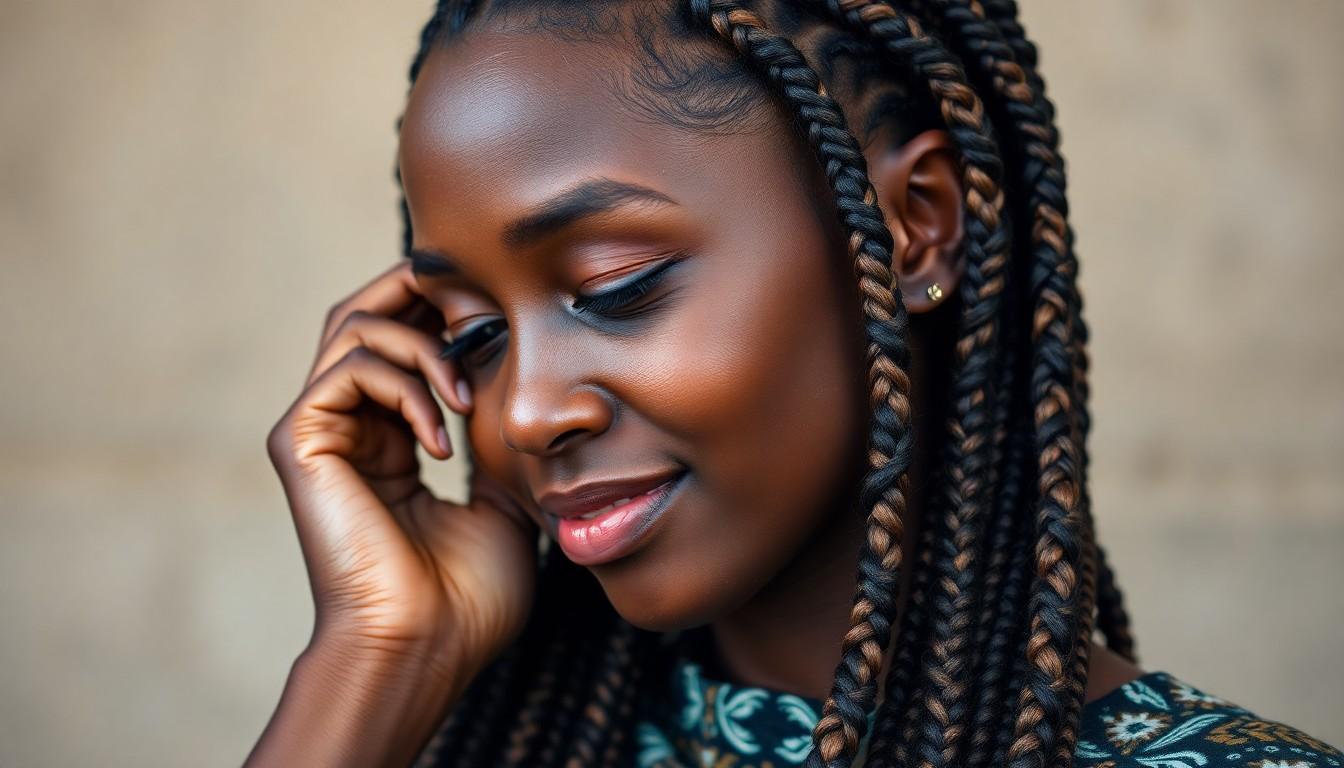
Excessive Manipulation
Touching your Fulani braids too frequently leads to premature frizz and potential breakage. We recommend minimizing handling of your braids, especially during the first few days after installation when they’re still settling. Constant touching, adjusting, or playing with the braids disrupts the neat pattern and introduces unwanted oils from your hands. Your braids will maintain their pristine appearance much longer if you adopt a hands-off approach.
Edge Care Negligence
Neglecting proper edge care is one of the most damaging mistakes when wearing Fulani braids. The delicate hairline requires special attention since it contains your weakest hair strands. Start the braiding process with your natural hair before adding extensions to reduce tension. Apply lightweight edge control products rather than heavy gels that can cause buildup. Avoid styles that place excessive weight on your edges to prevent traction alopecia and permanent hair loss.
Using Incorrect Hair Type and Length
Selecting unsuitable hair extensions for your Fulani braids compromises both style longevity and hair health. We strongly advise consulting with a professional braider who can recommend the appropriate hair type based on your natural texture and desired outcome. Extensions that are too heavy or incompatible with your hair texture may cause unnecessary tension and breakage. Professional guidance ensures your braids complement your natural hair rather than damage it.
Installing Overly Heavy Braids
Braids that are too heavy create excessive tension on your scalp and hair follicles. This constant pulling can lead to hair loss, particularly around the edges and nape. Keeping your braids relatively thin helps distribute weight more evenly across your scalp. The ideal Fulani braid should feel secure without causing headaches or scalp pain, which are clear indicators that your braids are too heavy.
Prolonged Wear Without Maintenance
Wearing Fulani braids beyond their recommended timeframe invites hair damage and scalp issues. Even the most beautifully installed braids require removal after 6-8 weeks maximum. Extended wear leads to product buildup, excess tension on new growth, and potential bacterial growth on the scalp. Regular maintenance checks help you determine when it’s time for removal before damage occurs.
Inadequate Pre-Installation Hair Care
Skipping proper hair preparation before getting Fulani braids significantly impacts both the appearance and health of your style. Thoroughly cleanse your hair with a clarifying shampoo to remove product buildup. Apply a deep conditioning treatment to strengthen and hydrate your strands. Trim any split ends to prevent further damage during the braiding process. This preparation creates the optimal foundation for beautiful, healthy Fulani braids.
Using Improper Tools and Products
Attempting to install or maintain Fulani braids without the right tools compromises your results. Essential tools include a wide-tooth comb for gentle detangling, sectioning clips for organization during installation, and moisturizing hair products specifically formulated for braided styles. Using alcohol-heavy products dries out both your natural hair and extensions, leading to breakage and frizz. Invest in quality tools and products designed specifically for protective styling.
The Cultural Significance Behind Fulani Braid Patterns
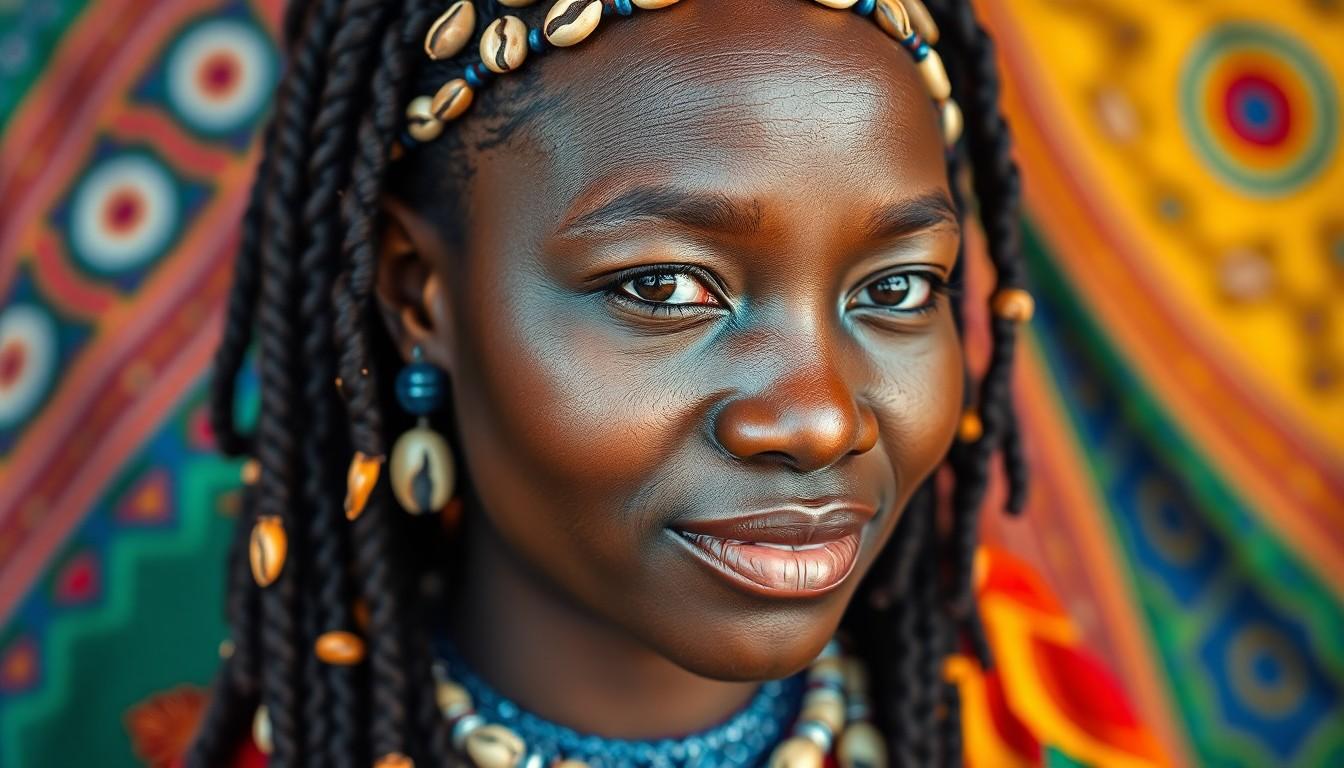
Identity and Heritage Expression
Fulani braids serve as a powerful expression of identity and cultural heritage among the Fulani people of West Africa. These intricate hairstyles aren’t merely decorative but represent centuries of tradition passed down through generations. Throughout history, Fulani women have used these distinctive braiding patterns to proudly display their cultural roots and distinguish themselves from other ethnic groups. The unique central braid running from front to back creates an instantly recognizable silhouette that connects wearers to their ancestral lineage.
Social Status Indicators
The complexity and design of Fulani braids often communicate important information about a person’s social standing within the community. Wealthier individuals typically showcase more elaborate braiding patterns adorned with precious metals and rare decorative elements. Certain braid formations indicate nobility or connection to prominent families within the Fulani society. Intricate patterns requiring many hours of craftsmanship signal the wearer’s ability to dedicate time and resources to personal appearance, reflecting their position in the community hierarchy.
Marital Status Communication
Fulani braids function as a visual language that conveys a woman’s marital status to others without verbal communication. Unmarried women often wear exact patterns that signal their availability for courtship within the community. Newly married women display unique braiding styles that announce their recent change in status. Patterns change again during different stages of marriage, with particular designs reserved exclusively for women who have been married for many years, creating a visual timeline of a woman’s life journey.
Geographic Origin Markers
Regional variations in Fulani braids help identify a person’s exact place of origin within the broader Fulani territory. Communities spanning across West Africa, the Sahel, and Sahara regions each developed distinctive twists on traditional patterns. Braiding techniques from Guinea feature unique characteristics that differ from those originated in Mali or Nigeria. These subtle variations serve as geographic identifiers, allowing Fulani people to recognize fellow community members from exact regions through their hairstyle choices.
Spiritual and Symbolic Meaning
Many Fulani braid patterns incorporate elements of sacred geometry and symbolic designs that connect wearers to spiritual traditions. The circular formations seen in certain styles represent the cycle of life and continuity of tradition. Exact patterns are believed to offer protection from negative energies and bring good fortune to the wearer. The adornments used, particularly cowrie shells, carry important spiritual importance as symbols of fertility, prosperity, and divine feminine energy within traditional Fulani belief systems.
Artistic Cultural Preservation
Fulani braids represent a traditional art form that preserves cultural practices through lived experience rather than written records. The knowledge of creating these complex patterns has been maintained through oral tradition and hands-on learning between generations. Master braiders hold respected positions within communities as keepers of cultural knowledge and artistic techniques. The continued practice of these braiding traditions, even in modern contexts, serves as a living museum of Fulani aesthetic values and artistic expression.
Nomadic Lifestyle Reflection
The practical design of Fulani braids reflects the historically nomadic lifestyle of the Fulani people. These hairstyles were developed to require minimal daily maintenance while protecting the hair during travels across harsh environments. The secure nature of the braids prevents tangling and damage while herding livestock or captivating in daily activities. Decorative elements like coins and beads are attached firmly to prevent loss during movement, combining practicality with beauty in a way that honors the community’s traditional lifestyle.
Celebrities Rocking Stunning Fulani Braid Styles
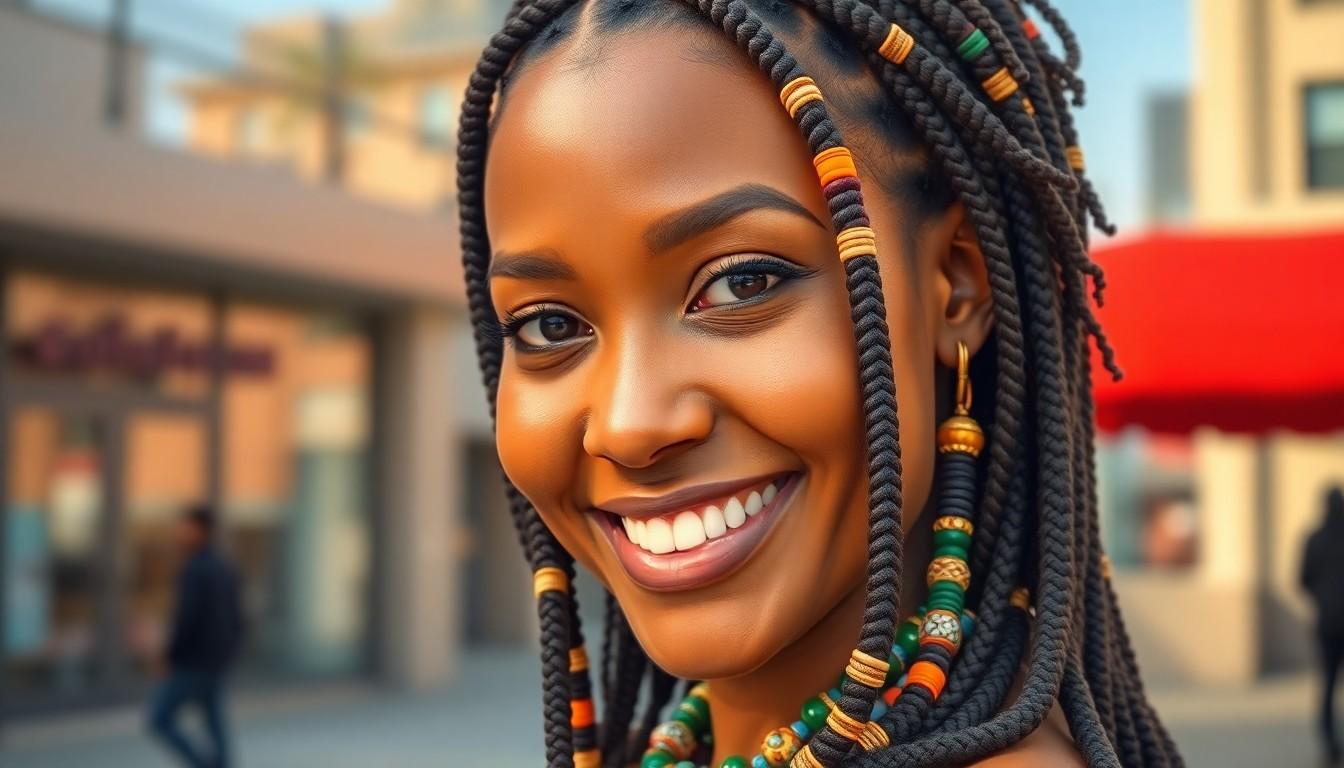
Rihanna
Rihanna has played a pivotal role in popularizing Fulani braids within mainstream culture. Her various interpretations of this traditional style showcase both versatility and personal flair. Many fashion publications credit her with bringing these culturally important braids to the forefront of beauty trends. Through red carpet appearances and social media posts, Rihanna continues to demonstrate how Fulani braids can be both authentic and fashion-forward.
Alicia Keys
Alicia Keys consistently incorporates Fulani braids into her signature look for both casual outings and formal events. Her long-standing appreciation for the style has helped maintain its relevance in the entertainment industry. Keys often pairs her braids with statement jewelry that complements the traditional aesthetic. Her commitment to wearing protective styles has inspired many fans to explore Fulani braids as a beautiful hair option.
Doechii
Grammy winner Doechii has embraced Fulani braids as part of her distinctive artistic identity. During her album promotion tour, she showcased these braids across multiple high-profile appearances, including her NPR Tiny Desk Concert. Her creative approach reached new heights when she made headlines by tying her Fulani braids to her backup dancers during a performance on The Late Show with Stephen Colbert. This innovative styling demonstrates how traditional braids can become an extension of artistic expression.
Tyla
Global superstar Tyla recently turned heads with her “Shooting Star” Fulani braids, crafted by celebrity stylist Louis Souvestre. This modern variation maintains traditional elements while introducing contemporary design concepts. Tyla’s adoption of these braids highlights the ongoing evolution and innovation within Fulani braiding techniques. Her influence has helped introduce these styles to new audiences worldwide.
Cicely Tyson
The late Cicely Tyson made a groundbreaking impact when she wore Fulani braids on the cover of JET magazine decades ago. This bold choice challenged beauty standards and created space for Black hairstyles in mainstream American culture. Tyson’s pioneering decision helped pave the way for today’s celebrities to proudly wear protective styles on public platforms. Her cultural legacy continues through every celebrity who confidently showcases these traditional braids.
How to Remove Fulani Braids Safely
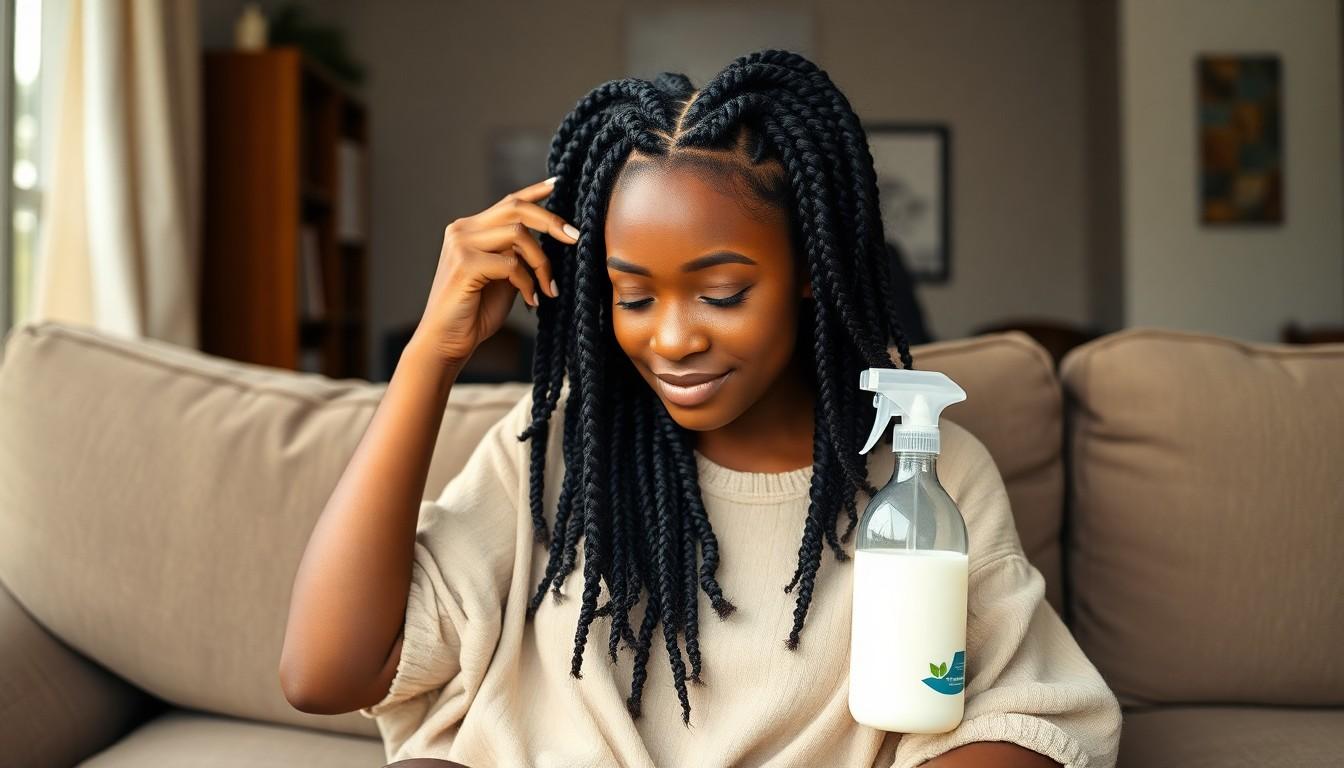
Preparation Before Removal
Removing Fulani braids requires careful preparation to ensure your hair remains healthy throughout the process. We recommend setting aside a dedicated weekend for this task, as it can be time-consuming and physically demanding. Gather some entertainment options like your favorite TV shows, YouTube videos, or podcast episodes to make the lengthy process more enjoyable. Having these distractions ready will help you stay patient during what might be several hours of careful removal work.
Essential Tools and Products
The right tools make a important difference when removing Fulani braids safely. You’ll need:
- Sharp scissors to cut the braids shorter (without cutting your natural hair)
- Wide-tooth comb for gentle detangling
- Conditioner-water mixture in a spray bottle
- Deep conditioning treatment
- Moisturizing hair mask
Applying a mixture of conditioner and water to your roots helps loosen the braids and makes separation much easier while minimizing breakage.
Step-by-Step Removal Process
Taking a systematic approach is crucial for safely removing your Fulani braids:
- Begin from the back of your head and gradually work toward the front for better control
- Cut each braid a few inches from your scalp (never cut close to your natural hair)
- Spray the conditioner-water mixture generously on your roots
- Use your fingers rather than tools to gently separate each braid
- Remove any buildup with your fingertips using slow, careful movements
- Work in small sections to avoid overwhelming yourself and creating tangles
Post-Removal Hair Care
Your hair deserves special attention after removing Fulani braids. Wash your hair thoroughly with a gentle shampoo to remove all product residue. Apply a nourishing hair mask immediately after washing to refresh both your scalp and strands. Follow with a deep conditioning treatment to restore moisture and elasticity to your hair. This post-removal care routine is essential for preventing breakage and helping your hair recover from the extended styling period.
Helpful Tips for Minimal Damage
Protecting your hair during removal requires patience and proper technique. Consider asking a friend for help, as the process can be physically demanding, especially for hard-to-reach areas. Using your fingers instead of combs minimizes tension and breakage during the unraveling process. Apply generous amounts of conditioner to each section before removal to provide slip and reduce friction. Battle-tested hair care products designed specifically for braid removal can also make the process smoother while protecting your strands.
Conclusion: Embracing the Beauty of Fulani Braids
Fulani braids stand as a powerful testament to African heritage while continuing to evolve in our modern industry. These intricate styles offer more than just protection for natural hair – they connect wearers to centuries of tradition and cultural significance.
Whether you opt for classic patterns adorned with traditional beads or experiment with contemporary variations we’ve explored throughout this guide you’ll be participating in a living art form with deep roots.
We hope this guide has equipped you with the knowledge to appreciate properly install and maintain these stunning braids. By understanding both their cultural importance and practical care requirements you’ll enjoy beautiful healthy Fulani braids that honor their rich history while expressing your personal style.
Frequently Asked Questions
What are Fulani braids and where do they originate from?
Fulani braids are a protective hairstyle that originated from the Fulani people of West Africa. They feature distinctive plaiting styles and decorative accessories like beads, cowrie shells, and gold coins. These braids represent centuries of heritage and identity among the Fulani, one of Africa’s largest nomadic groups, and traditionally communicate information about a woman’s social status, age, and marital status.
How long do Fulani braids typically last?
Fulani braids typically last 4-6 weeks when properly maintained. Their longevity depends on your hair care routine, which should include gentle cleansing, regular moisturizing, and minimizing manipulation to prevent frizz. Using silk or satin scarves and pillowcases at night helps preserve the style. The weight of accessories and how tightly the braids are installed also affect how long they remain looking fresh.
What makes Fulani braids different from other braided styles?
Fulani braids are distinguished by their center part with braids flowing backward, thin to medium-sized plaits, and decorative elements like beads or cowrie shells. Unlike other braided styles, authentic Fulani braids incorporate specific patterns that have cultural significance, often using sacred geometry that connects wearers to ancestral traditions. Their unique combination of functionality and aesthetics reflects the Fulani people’s nomadic lifestyle.
How do I prepare my hair for Fulani braids?
Prepare your hair by thoroughly washing and deep conditioning it 1-2 days before installation. Detangle gently and allow your hair to dry completely. Apply a moisturizing leave-in conditioner and seal with a light oil. Section your hair properly for clean lines and use edge control for a polished look. Having the right tools ready—including quality braiding hair, sectioning clips, and decorative accessories—will ensure a smooth installation process.
Are Fulani braids culturally appropriate for non-Africans to wear?
Wearing Fulani braids as a non-African is appropriate when done with cultural appreciation rather than appropriation. This means acknowledging and respecting their cultural significance, learning about their history, and properly attributing the style to the Fulani people. Supporting Black-owned businesses for installation and avoiding claiming the style as a new “trend” demonstrates respect for the centuries of heritage these braids represent.
What are common mistakes to avoid with Fulani braids?
Common mistakes include excessive manipulation (leading to frizz), neglecting edge care, using incorrect hair types or lengths, and installing overly heavy braids that strain your scalp. Skipping proper pre-installation hair care and using the wrong products can also compromise your style. Avoid leaving braids in for too long (beyond 8 weeks) as this can cause matting and damage to your natural hair.
How do I safely remove Fulani braids?
Safely remove Fulani braids by first cutting off the sealed ends, then spraying with a conditioner-water mixture to loosen them. Unbraid each section gently from bottom to top. Use your fingers to detangle before combing. After removal, thoroughly cleanse your scalp, deep condition, and apply a protein treatment if needed. Take your time—rushing the process can cause breakage and damage to your natural hair.
What do the different Fulani braid patterns symbolize?
Different Fulani braid patterns traditionally symbolize a woman’s social status, marital status, age, wealth, and geographic origin. More complex patterns often indicate higher social standing, while specific designs might show whether a woman is married or eligible for marriage. Some patterns incorporate sacred geometry with spiritual significance. Regional variations developed as Fulani people migrated across Africa, creating distinct sub-styles within the tradition.
Which celebrities have popularized Fulani braids?
Celebrities who have popularized Fulani braids include Rihanna, who showcased them at the 2014 iHeartRadio Music Awards; Alicia Keys, who has worn various interpretations throughout her career; Doechii, known for her innovative takes on the style; South African singer Tyla, who incorporates them into her performance aesthetic; and Cicely Tyson, who helped bring traditional African hairstyles to mainstream American culture decades ago.
What products do I need to maintain Fulani braids?
Essential products for maintaining Fulani braids include a lightweight moisturizing spray, diluted apple cider vinegar solution for scalp cleansing, alcohol-free mousse for frizz control, lightweight oils (like jojoba or almond) for shine, and dry shampoo for refreshing between washes. A satin or silk scarf/bonnet and pillowcase are crucial for nighttime protection. Edge control gel helps maintain a polished hairline throughout the style’s lifespan.

